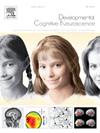BrainXcan identifies brain features associated with behavioral and psychiatric traits using large-scale genetic and imaging data
IF 4.9
2区 医学
Q1 NEUROSCIENCES
引用次数: 0
Abstract
Advances in brain MRI have enabled many discoveries in neuroscience. Case-control comparisons of brain MRI features have highlighted potential causes of psychiatric and behavioral disorders. However, due to the cost and difficulty of collecting MRI data, most studies have small sample sizes, limiting their reliability. Furthermore, reverse causality complicates interpretation because many observed brain differences are the result rather than the cause of the disease. Here we propose a method (BrainXcan) that leverages the power of large-scale genome-wide association studies (GWAS) and reference brain MRI data to discover new mechanisms of disease etiology and validate existing ones. BrainXcan tests the association with genetic predictors of brain MRI-derived features and complex traits to pinpoint relevant brain-wide and region-specific features. Requiring only genetic data, BrainXcan allows us to test a host of hypotheses on mental illness, across many MRI modalities, using public data resources. For example, our method shows that reduced axonal density across the brain is associated with schizophrenia risk, consistent with the disconnectivity hypothesis. We also find that the hippocampus volume is associated with schizophrenia risk, highlighting the potential of our approach. Taken together, our results show the promise of BrainXcan to provide insights into the biology of GWAS traits.
BrainXcan通过大规模的基因和成像数据来识别与行为和精神特征相关的大脑特征
脑磁共振成像技术的进步为神经科学带来了许多发现。脑部磁共振成像特征的病例对照比较凸显了精神和行为障碍的潜在原因。然而,由于核磁共振成像数据的收集成本和难度,大多数研究的样本量较小,限制了其可靠性。此外,反向因果关系也使解释变得复杂,因为许多观察到的大脑差异是疾病的结果而非原因。在这里,我们提出了一种方法(BrainXcan),利用大规模全基因组关联研究(GWAS)和参考脑磁共振成像数据的力量来发现新的疾病病因机制并验证现有机制。BrainXcan 对脑核磁共振成像衍生特征和复杂性状的遗传预测因子进行关联测试,以确定相关的全脑和特定区域特征。只需要基因数据,BrainXcan 就能让我们利用公共数据资源,在多种核磁共振成像模式下测试一系列有关精神疾病的假设。例如,我们的方法显示,整个大脑轴突密度的降低与精神分裂症风险有关,这与断连假说一致。我们还发现海马体积与精神分裂症风险相关,这凸显了我们方法的潜力。总之,我们的研究结果表明,BrainXcan 有希望提供对 GWAS 特征生物学的见解。
本文章由计算机程序翻译,如有差异,请以英文原文为准。
求助全文
约1分钟内获得全文
求助全文
来源期刊

Developmental Cognitive Neuroscience
NEUROSCIENCES-
CiteScore
7.60
自引率
10.60%
发文量
124
审稿时长
6-12 weeks
期刊介绍:
The journal publishes theoretical and research papers on cognitive brain development, from infancy through childhood and adolescence and into adulthood. It covers neurocognitive development and neurocognitive processing in both typical and atypical development, including social and affective aspects. Appropriate methodologies for the journal include, but are not limited to, functional neuroimaging (fMRI and MEG), electrophysiology (EEG and ERP), NIRS and transcranial magnetic stimulation, as well as other basic neuroscience approaches using cellular and animal models that directly address cognitive brain development, patient studies, case studies, post-mortem studies and pharmacological studies.
 求助内容:
求助内容: 应助结果提醒方式:
应助结果提醒方式:


